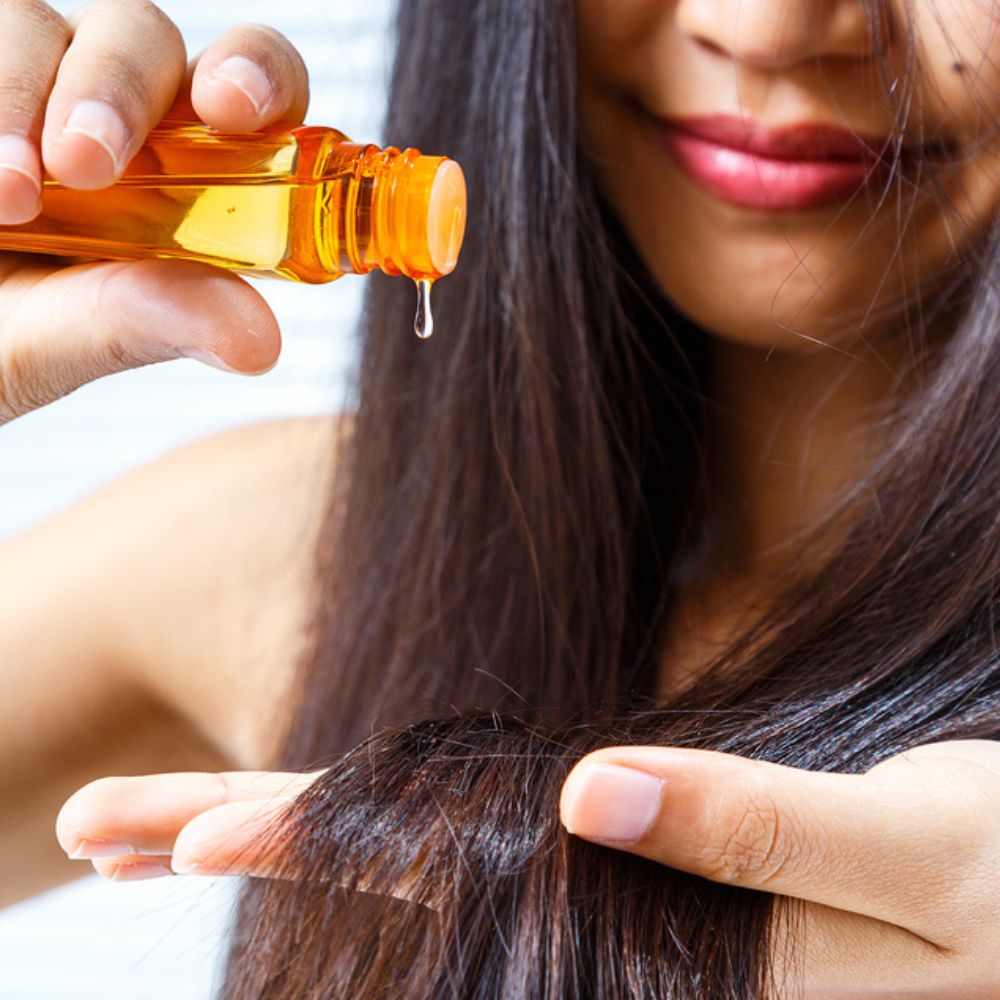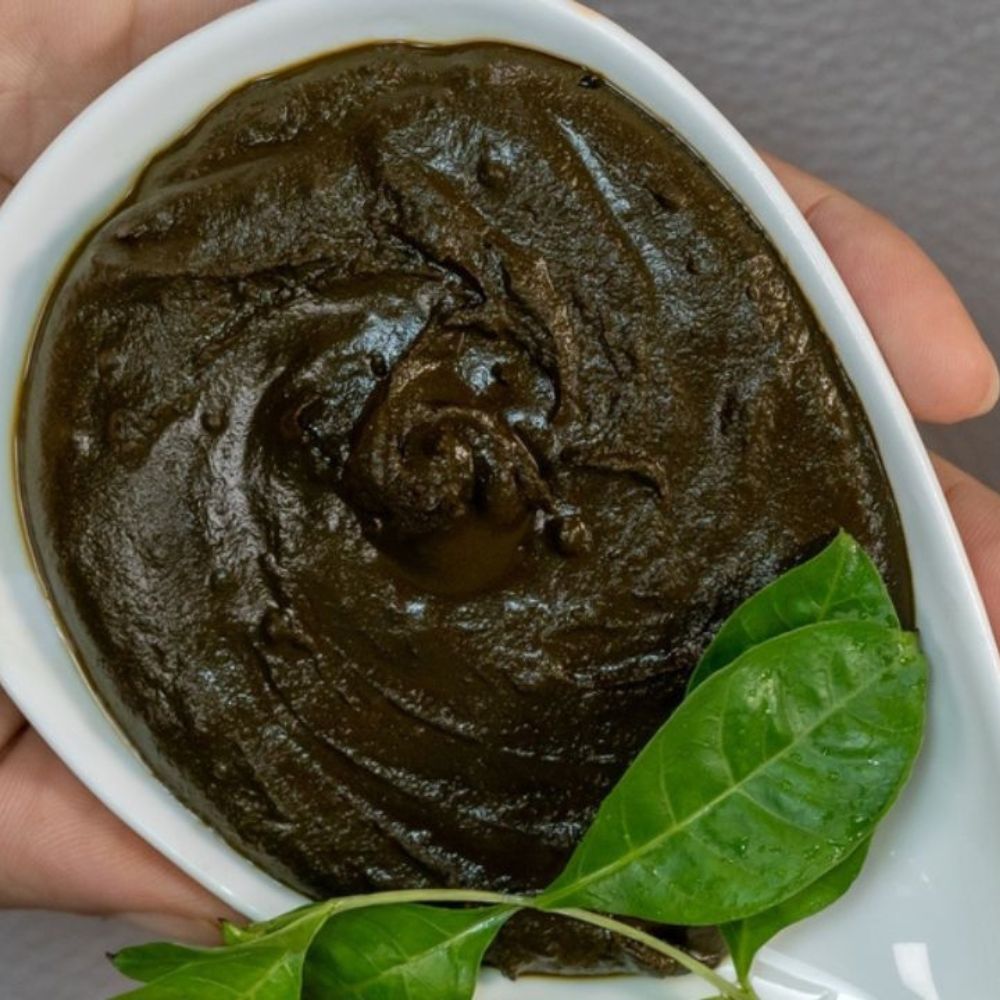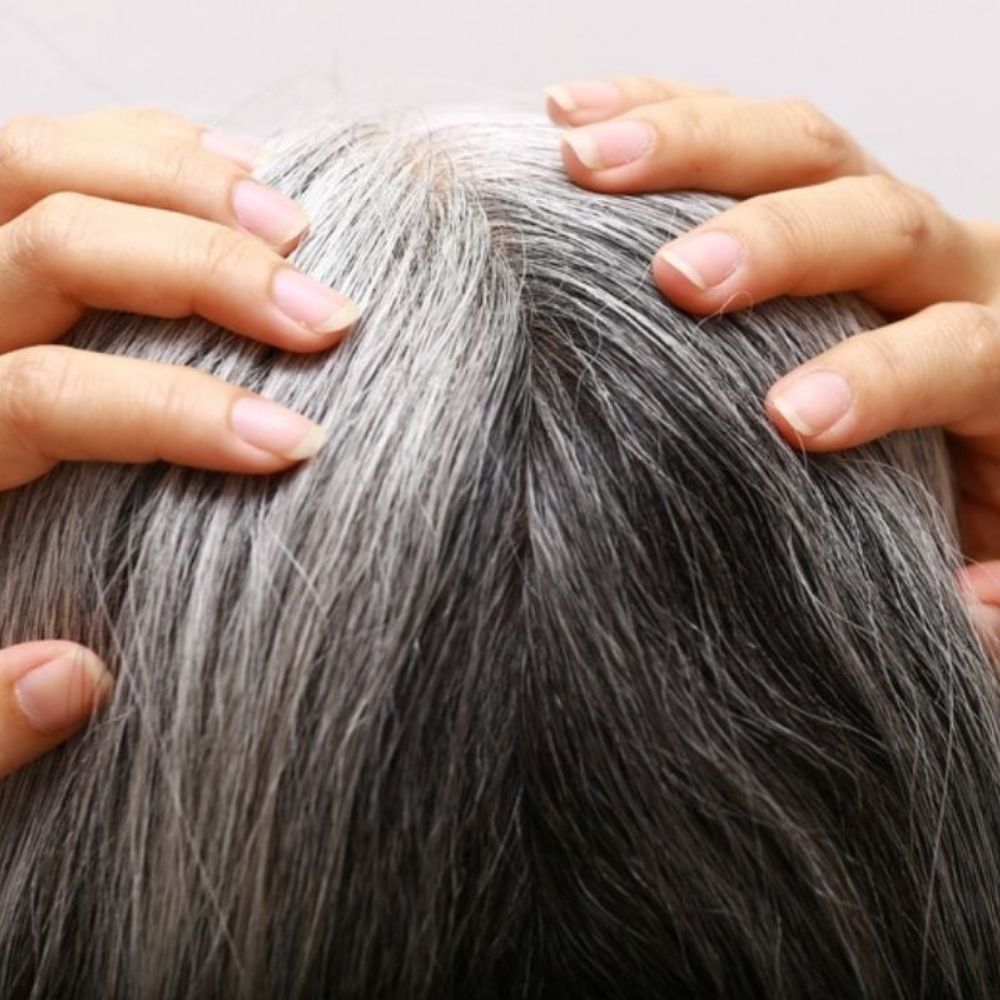Sesame Oil for Hair: Benefits, Ways to Use Them, And More
The benefits of sesame oil for hair are often overlooked when compared to its culinary uses. Discover how this natural elixir can enhance hair growth, and shine.

Sesame oil for hair is often an overlooked remedy. Though small, these seeds have versatile uses beyond cooking and can work wonders for your hair as well. It can transform them, making them nourished, thicker, and longer. This golden gingelly or til oil is rich in antioxidants, vitamin E, B complex, calcium, phosphorus, and essential fats. It's an excellent base or carrier oil in cosmetics. It has everything that will make you ditch your regular hair oils and embrace sesame seed oil for healthier hair. Here's how you can incorporate it into your hair care routine.
Exploring Different Varieties of Sesame Seeds
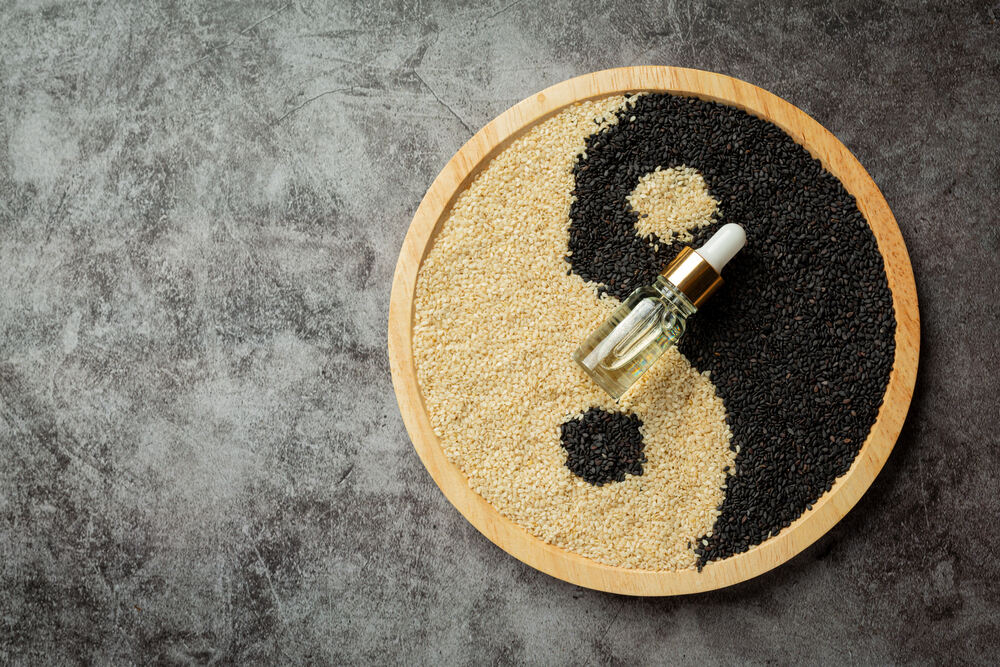
Sesame oil is a culinary delight derived from tiny sesame seeds. These seeds often come in various colors, from off-white to black, and yield oils ranging from pale yellows to deep browns, each with distinct characteristics. The black varieties have husk or hull on them whereas the white sesame seeds won’t have them.
A 2010 study found that white sesame seeds had more fat, protein, and moisture, while another study showed black seeds had stronger antioxidants (1), (2). However, both of them are suitable for hair.
- Light Sesame Seed Oil: It is delicately crafted pale yellow oil from lightly roasted sesame seeds. It is perfect for cooking and frying a wide variety of dishes due to its mild flavor and high smoke point.
- Dark Sesame Seed Oil: This one is from the toasted/roasted seeds. It boasts a deeper flavor and a rich, dark hue. In Asian kitchens, it's the secret ingredient enhancing the umami notes in dishes and dipping sauces.
- Cold-Pressed or Virgin Sesame Oil: This oil is extracted meticulously without heat or chemicals. It is created from pressed and toasted sesame seeds and has a rich golden amber color. It also adds a unique nutty flavor and is often used as a garnish to culinary creations.
Due to its extraction process, it retains natural nutrients and is thus found in various beauty products. This oil is renowned for its potency, especially when mixed with suitable carrier oils.
This yellow elixir is a powerhouse of omega fatty acids, lignans, and essential nutrients. It's loaded with Vitamin E, zinc, copper, magnesium, calcium, iron, and Vitamin B-6, so it becomes a protective shield, a source of nourishment, and a detoxifying agent for both skin and hair (1).
Sesame Oil for Hair Care in Cosmetics
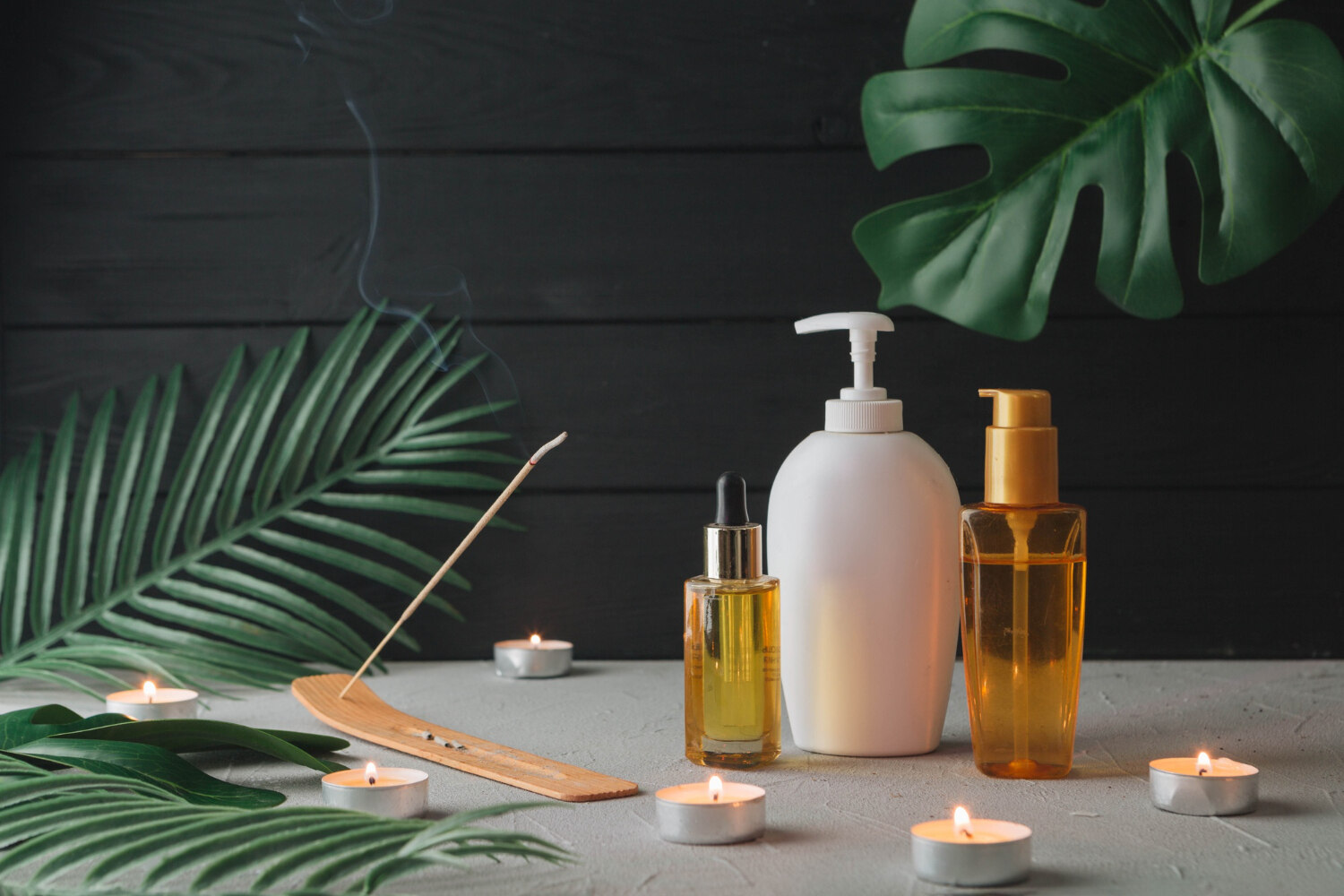
Sesame oil is a star ingredient in numerous beauty products, from soaps and shampoos to skin moisturizers and other cosmetics. This natural elixir oil has deep roots in ancient practices like Ayurveda. It is often popular for its antioxidants, anti-inflammatory, and antimicrobial properties (3). Plus, its nourishing property makes it a favorite ingredient in skincare and hair care routines, with many even applying it directly for a natural glow.
Our contributor Kristle Jones, a licensed cosmetologist, shares, “Sesame seeds are rich in hair growth inducing vitamins like A, B & E and minerals like calcium, magnesium and zinc. You can utilize raw sesame seeds or oil to apply topically to the hair as a DIY growth serum or you may ingest them raw or roasted (it’s recommended that you soak them first, either way) to enjoy all the benefits.”
Often, while exploring hair products, it is difficult to find 'sesame seed oil' in the ingredient list directly. Thus, keep an eye out for these other names of sesame oil in your shampoos, and conditioners (4).
- Hydrogenated sesame seed oil
- Sesamum indicum
- Sodium sesameseedate
- Sesame oil unsaponifiable
Additional Tips
- Opt for pure, raw, and cold-pressed sesame oil for maximum benefits.
- Explore specialty stores, Asian markets, or online platforms for high-quality sesame oil.
- Roasted sesame oil, while flavorful, differs in nutritional content and may not provide the same benefits for hair. Thus buy specially curated sesame oil for hair.
- If you prefer a good Ayurvedic-style massage, then go for cold-pressed sesame seed oils.
- Allergy alert: Sesame oil may trigger allergies in some individuals, ranging from mild itching to severe anaphylaxis (5), (6). If any adverse reactions occur, discontinue use and seek medical advice promptly.
Sesame Seed Hair Oil - Sources
Centuries ago, the Chinese and Egyptians recognized sesame oil’s worth, utilizing it both in their kitchens and in cosmetic concoctions. Today, Africa and Asia stand as vibrant markets for sesame oil consumption. Sesame oil's soothing touch is even utilized in aromatherapy and massages. Moreover, nearly 90% of herbal oils in Ayurvedic treatments find their base in them.
Creating this at home is simpler than you might think.
- Just toast a couple of cups of sesame seeds until golden brown, mix them with your preferred cooking oil, or blend them with warm water for a smooth paste.
- Strain this blend through cheesecloth, and chill them.
- After a little patience, you'll see sesame oil separating out due to its lightness.
Sesame oil, though stable, appreciates a cool environment, like in the fridge. Also, avoid too much light and heat. Storing it in amber-colored or opaque bottles ensures its rich nutrients remain intact, ready to nurture your body and soul.
How to Use Sesame Oil for Hair Growth
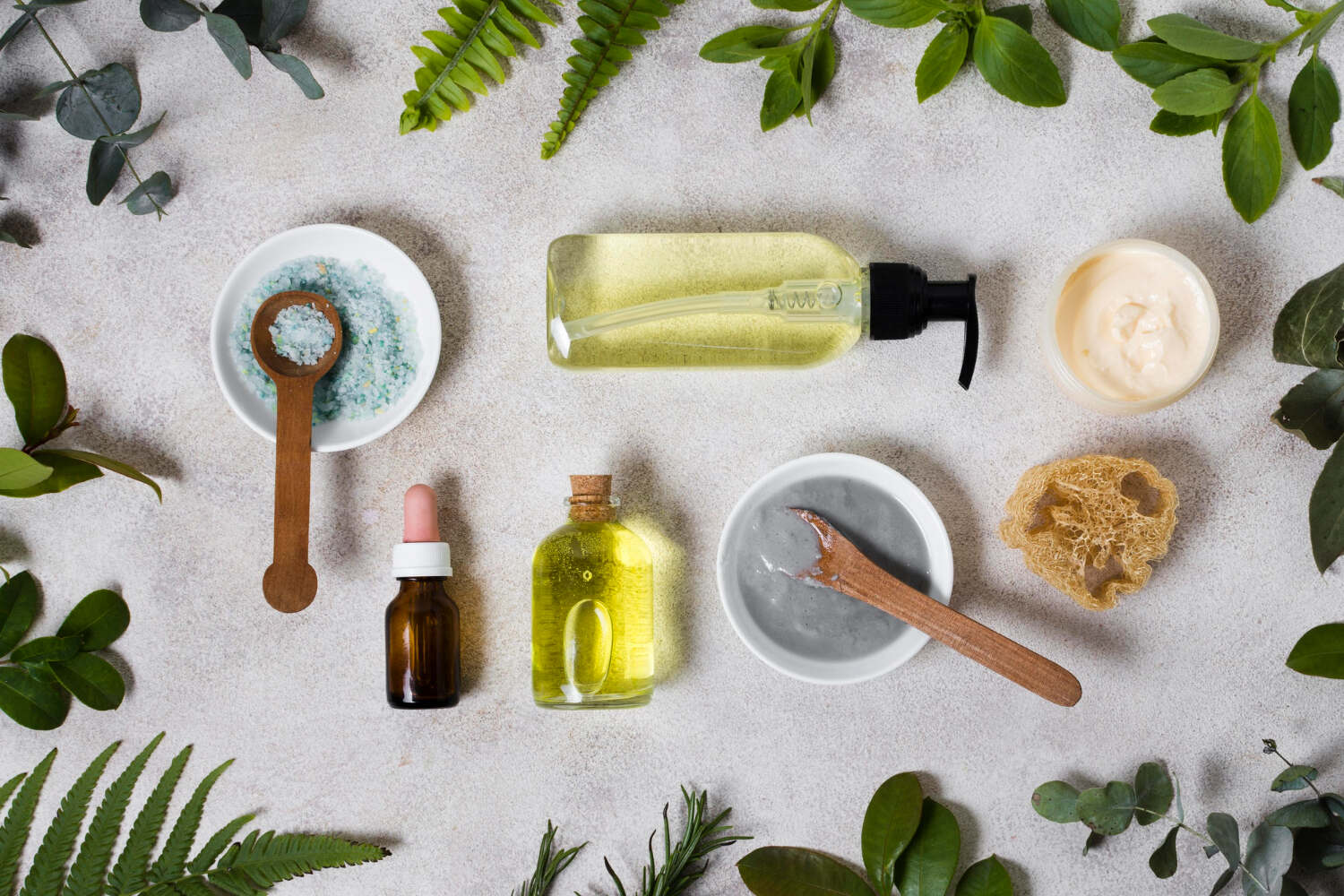
1. Nourishing Sesame Oil Hair Mask:
This regular hair oil massage can hydrate your hair strands and nourish the scalp without leaving a greasy film or a stale sesame smell.
Ingredients
- 2-3 tablespoons of sesame oil
Instructions
- Warm the sesame oil slightly for 10 to 15 seconds in a microwave.
- Massage gently from the hairline to the back of your scalp, covering the ends.
- Cover your hair with a shower cap or warm towel.
- Leave the mask on for at least 1 hour.
- Wash your hair with regular shampoo and conditioner.
2. Sesame-Almond Oil Blend:
You can also add other nourishing oils like avocado, olive, almond, or coconut oil to your sesame seed oil (7).
Ingredients
- 2 tablespoons sesame oil
- 2 tablespoons almond oil (or any of the above oils of your choice)
Instructions
- Mix equal amounts of sesame and almond oils.
- Work the mixture into your scalp and hair.
- Wrap your hair with a hot towel for 30-40 minutes.
- Rinse with a mild shampoo and conditioner.
3. Sesame Oil Fusion with Avocado:
Instead of avocado oil, you can also use one whole ripe avocado for a hair mask. Avocado is rich in antioxidants and vitamin E that can neutralize free radicals and prevent hair damage (8).
Ingredients
- 1 ripe avocado
- 2 tablespoons sesame oil
Instructions
- Mash 1 ripe avocado, and mix it with sesame oil to create a smooth paste.
- Apply it to your scalp as well as hair strands.
- Leave it on for an hour and wash it with regular shampoo.
4. Sesame Oil And Egg Protein Pack:
Eggs are one of the highest protein sources. This can even address the protein damage that happens in your hair shaft. The pack can also condition, shine, and soften your hair.
Ingredients
- 2 tablespoons sesame oil
- 1 whole egg (for normal hair) 2 egg yolks (for dry hair) or 2 egg whites (for oily hair)
Instructions
- Beat the egg(s) with sesame oil to form a mixture.
- Massage the mixture to your hair and scalp.
- Leave it for 30 minutes and finally rinse it with cold water.
5. Fenugreek And Sesame Oil Mask:
Similar to sesame, fenugreek also has antifungal, and anti-inflammatory properties that make it ideal for dandruff treatment (9).
Ingredients
- 2 teaspoons fenugreek seeds
- 2 tablespoons sesame oil
Instructions
- Place fenugreek seeds in sesame oil and heat gently.
- Massage into the scalp and hair, wrap with a hot towel.
- Leave for 30-40 minutes and wash with a mild shampoo.
6. Sesame Oil And Honey - Conditioning Mix:
Honey and sesame oil can moisturize hair effectively (10). However, use honey with caution, as excessive application can lighten hair due to its bleaching properties.
Ingredients
- 3 tablespoons sesame oil
- 1 teaspoon honey
Instructions
- Mix honey with sesame seed oil.
- Massage it well into the scalp and hair.
- Cover your hair with a hot towel for better absorption.
- Leave for 30 minutes and wash with a mild shampoo.
7. Sesame Seed Oil And Aloe Vera for UV Protection:
Aloe vera and sesame oil both aid in reflecting UV rays (11). Thus this concoction functions as a shield around your hair shaft to protect it from the sun's damage.
Ingredients
- 2 tablespoons aloe vera gel
- 2 tablespoons sesame oil
Instructions
- Mix aloe vera gel and sesame oil in a pan or bowl.
- Heat them slightly for a few seconds, and cool.
- Apply the mixture to your hair as well as your scalp.
- Wait for 30-45 minutes and wash with a mild shampoo.
Benefits Of Sesame Seed Oil For Hair
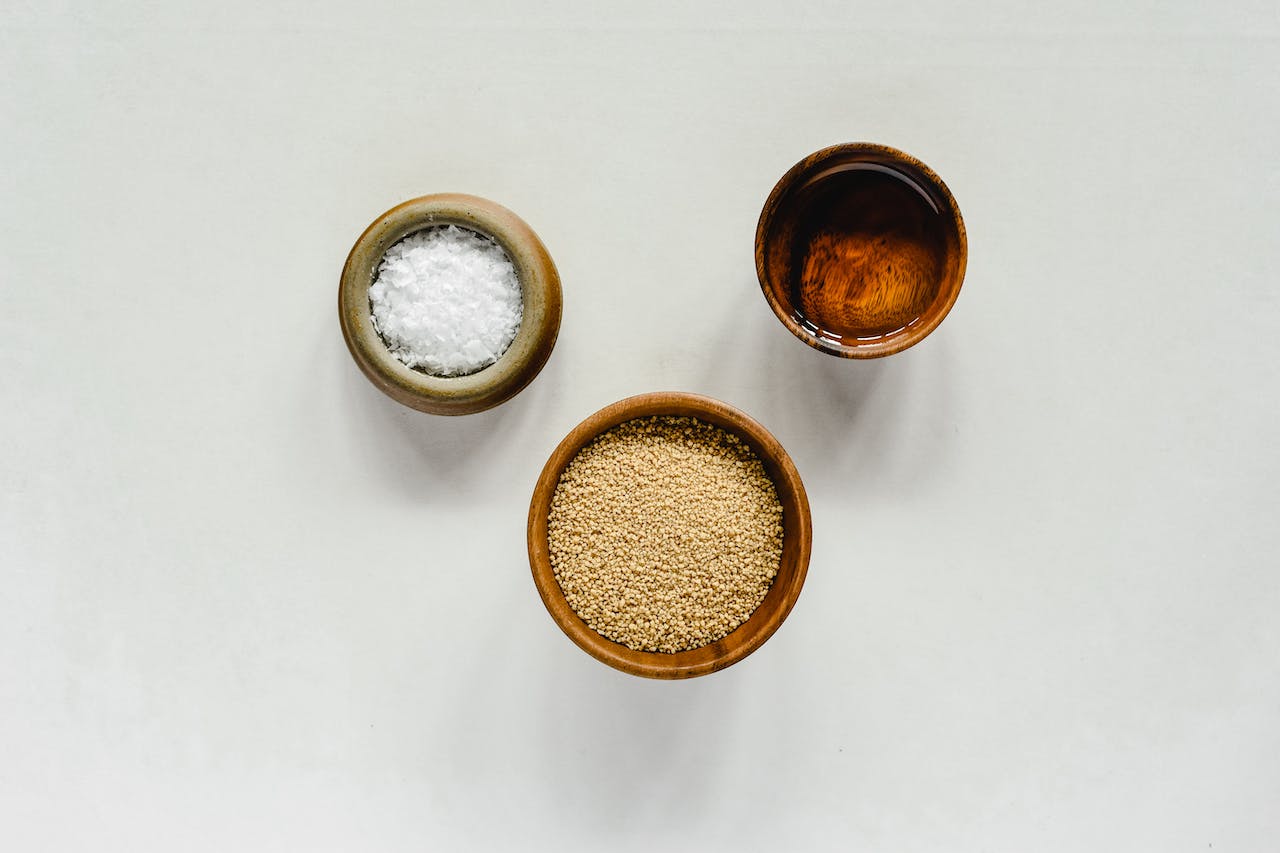
1. Nutritional Powerhouse:
Whole sesame seeds are packed with vital nutrients like vitamin B-1, calcium, copper, phosphorus, iron, magnesium, manganese, and zinc (1). These nutrients act as the building blocks your hair needs to grow strong and healthy. Without them, hair can thin out and become fragile.
2. Combats Dryness Naturally:
Sesame oil is an emollient, meaning it softens the skin and hair strands, providing a natural remedy for dryness. It is enriched with fatty acids which are commonly found in most skin creams and shampoos to combat dryness. They also have palmitic, oleic, and linolenic acids that are known to improve dry hair and scalp, leaving your locks smoother and shinier (7).
3. Goodness of Fatty Acids:
Fatty acids not only combat dryness but have other benefits too. Sesame seed oil is rich in omega-3 and omega-6 fatty acids, which are essential fats vital for hair health (12). These fatty acids play a significant role in encouraging growth and preventing hair loss. A scientific study revealed that supplements rich in omega fatty acids not only decreased the amount of hair in the resting stage (telogen) but also boosted hair growth in the active stage (anagen).
Sesame oil is also abundant in oleic acid which can quickly penetrate hair follicles and help with hair growth and circulation (13).
These fatty acids and lignans in them also soothe inflamed and irritated scalp and hair roots (7). This healing touch may reverse small bald patches and areas of thinning hair, promoting scalp health and rejuvenation.
4. Dandruff Defense:
Sesame seeds and sesame oil possess antibacterial and antifungal properties, that can effectively combat common scalp infections that lead to dandruff. They are known to have antibacterial agents like sesamin that can combat most bacteria (7). When applied to a clean scalp, its occlusive properties keep the skin moisturized, preventing dryness, flaking, and itching.
5. Strength And Shine:
Using sesame oil as a hair mask strengthens hair, preventing breakage and split ends. Its emollient properties fill gaps in hair strands, forming a protective seal. Additionally, sesame oil reduces water absorption during showers, preventing hair swelling and damage, resulting in longer, stronger, and shinier hair (7).
6. Prevents Premature Graying:
Anecdotal evidence suggests that eating black sesame seeds or regular massages with sesame oil may prevent premature graying and even promote darker hair. Sesame oil’s antioxidants such as sesamolin and nutrient contents could potentially reverse premature graying, or slow down the process (7). However, more research is required in this area.
7. UV Protection:
Sesame oil acts as a natural sunblock, resisting up to 30% of UV rays. Applying sesame seed oil forms a protective coat around hair, safeguarding it from sun damage and pollution, and ensuring your hair stays vibrant and healthy even on the sunniest of days (7).
Conclusion
Gingelly or sesame oil for hair is derived from a wide variety of sesame seeds in warmer regions. It is a tiny powerhouse seed that comprises the most essential nutrients that are vital for hair health. Incorporating them into your meals or hair care routine can offer immense benefits to your hair. When applied, this oil strengthens hair, fosters growth, and enhances shine. However, excessive oil usage can clog pores. To prevent this, limit application time and ensure thorough cleansing with shampoo and warm water. Also, warming the oil slightly is advisable, but test the temperature to avoid burns.
Contributor: Kristle Jones, Licensed cosmetologist and Owner - Kate Lane Salons





 JOIN OUR WHATSAPP CHANNEL
JOIN OUR WHATSAPP CHANNEL

















































